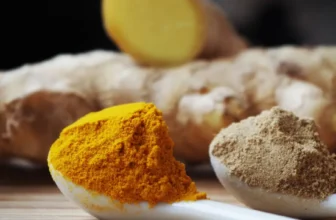Cumin Varieties: A Flavorful Guide to This Versatile Spice
Cumin are a staple spice in many kitchens worldwide and are known for their distinctive flavor and aromatic qualities. It is derived from the seeds of the Cuminum cyminum plant, a parsley family member. Cumin is used extensively in culinary recipes and has a rich history in traditional and contemporary cuisines. This article explores the various varieties of cumin, their unique flavor profiles, culinary uses, and health benefits. Understanding these different types can enhance your culinary skills and broaden your appreciation for this versatile spice.
Table of Contents
The Most Common Varieties of Cumin
Cumin come in several varieties, each with its unique characteristics. The most common types are brown cumin, black cumin, and white cumin. Let’s delve into each variety to understand their distinct attributes and uses.
-
 Premium Black Cumin (Kala Zeera) – 100% Natural Organic & Pure | Intense Flavour & Rich Aroma | Best Price in Pakistan₨ 373.00 – ₨ 860.00Price range: ₨ 373.00 through ₨ 860.00★★★★★
Premium Black Cumin (Kala Zeera) – 100% Natural Organic & Pure | Intense Flavour & Rich Aroma | Best Price in Pakistan₨ 373.00 – ₨ 860.00Price range: ₨ 373.00 through ₨ 860.00★★★★★ -
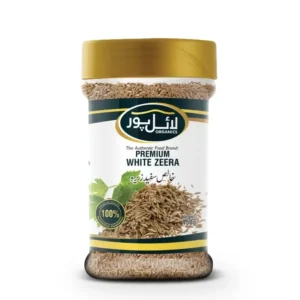 Premium White Cumin (Safaid Zeera) – 100% Natural Organic & Pure | Delicate Flavour & Rich Aroma | Best Price in Pakistan₨ 280.00 – ₨ 624.00Price range: ₨ 280.00 through ₨ 624.00
Premium White Cumin (Safaid Zeera) – 100% Natural Organic & Pure | Delicate Flavour & Rich Aroma | Best Price in Pakistan₨ 280.00 – ₨ 624.00Price range: ₨ 280.00 through ₨ 624.00
Brown Cumin (Regular Cumin)
Brown cumin, also known as regular cumin or common cumin, is the most widely used variety. These brownish-yellow seeds have a robust, earthy flavor with a slightly bitter undertone. Brown cumin is typically used in its whole cumin seeds form or as cumin powder.
- Flavor Profile: Pungent, earthy, and warm.
- Culinary Uses: This variety is crucial in spice blends like garam masala and curry powder. It is also used in soups, stews, meats, and vegetables.
- Health Benefits: Rich in antioxidants, it aids digestion and has anti-inflammatory properties.
Black Cumin (Nigella Sativa)
- Black cumin, also known as Nigella sativa, black caraway, is a different species with more minor and darker seeds than regular cumin. Despite the name, it is not directly related to brown cumin but shares some flavor similarities.
- Flavor Profile: Peppery, slightly bitter, and nutty.
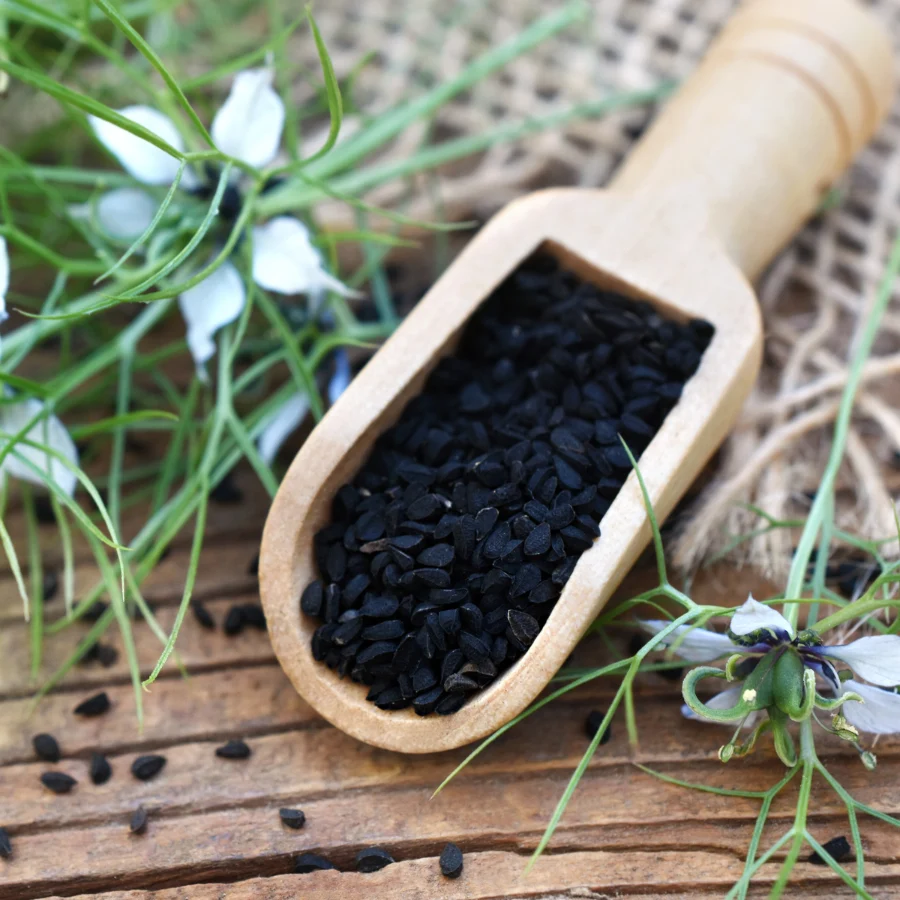
- Culinary Uses: Commonly used in Middle Eastern and Indian cuisines, it adds depth to breads, salads, and pastries.
- Health Benefits: Known for its immune-boosting and antimicrobial properties, it is often used in traditional medicine.
White Cumin (Safed Jeera)
White cumin, or safed jeera, is another distinct variety. These seeds are lighter in color and have a milder flavor compared to brown cumin.
- Flavor Profile: Mild, sweet, and less intense.
- Culinary Uses: Ideal for delicate dishes that require a subtle cumin flavor. It is used in rice dishes, light curries, and desserts.
- Health Benefits: Similar to other cumin varieties, it aids in digestion and improves metabolic health.
Ground Cumin vs. Whole Cumin Seeds
Varieties of Cumin are available both as whole seeds and in ground form. The choice between the two depends on the desired flavor intensity and the specific culinary application.
- Ground Cumin: Offers a more intense and immediate flavor. It is often used in spice blends, marinades, and rubs.
- Whole Cumin Seeds: Provide a more nuanced flavor when toasted. They are commonly used in tempering (tadka) for dishes like dals and curries.
Regional Varieties of Cumin Cultivation
Cumin is grown in various regions worldwide, each imparting subtle differences in flavor and quality. The primary cultivation regions include India, the Middle East, and the Mediterranean.
- Indian Cumin: Known for its robust flavor, it is a staple in many traditional Indian dishes. It is often used in both its ground and whole forms.
- Middle Eastern Cumin: Common in Middle Eastern cuisine, it is used in spice mixes like za’atar and baharat.
- Mediterranean Cumin: Used in Mediterranean and North African dishes, it adds depth to tagines, couscous, and spice blends like ras el hanout.
Culinary Uses of Cumin
Cumin is not only valued for its flavor but also for its numerous health benefits. It has been used in traditional medicine for centuries.
- Spice Blends: Integral to blends like curry powder, garam masala, and chili powder.
- Soups and Stews: Adds depth and warmth to broths and stews.
- Meats and Vegetables: Enhances the flavor of grilled meats, roasted vegetables, and legumes.
- Bread and Baked Goods: Used in baking for a unique aromatic twist.
- Cumin Infusions: Incorporated into teas and beverages for a spicy, aromatic flavor.
Health Benefits of Varieties of Cumin
Cumin is not only valued for its flavor but also for its numerous health benefits. It has been used in traditional medicine for centuries.
- Digestive Health: Aids in digestion and helps alleviate bloating and gas.
- Anti-inflammatory Properties: Reduces inflammation and may help with conditions like arthritis.
- Antioxidant Properties: Protects cells from oxidative damage.
- Immune Support: Boosts the immune system and helps fight infections.
- Blood Sugar Regulation: Assists in managing blood sugar levels.
Oil and Cumin-Based Products
- Beyond culinary uses, cumin is also utilized in various forms, such as oil and cumin-based products.
- Cumin Oil: Extracted from cumin seeds, this essential oil is used in aromatherapy and for its antimicrobial properties.
- Cumin Supplements: Available as capsules or extracts, these supplements are often marketed for their digestive and metabolic benefits.

Storage Tips and Preservation Methods
Proper storage of cumin is essential to maintain its flavor and potency.
- Whole Seeds: Store in an airtight container in a cool, dark place. Whole seeds have a longer shelf life than ground cumin.
- Ground Cumin: Should be kept in an airtight container away from heat and light. It is best used within six months for optimal flavor.
Cumin Substitutes
If you find yourself without cumin, several substitutes can mimic its flavor to varying degrees.
- Caraway Seeds: Offer a similar earthy flavor, though slightly sweeter.
- Coriander Seeds: Milder and lemony can be combined with other spices.
- Paprika: Adds color and a bit of smokiness, though the flavor is different.
Related post
Tips for Selecting Fresh Cumin
Conclusion
Cumin, in its various varieties, is a remarkable spice that enriches global cuisines with its distinctive flavor and numerous health benefits. Whether you prefer the robust taste of brown cumin, the subtlety of white cumin, or the unique profile of black cumin, understand these different types.
Top Selling Products at Lyallpur Organics
-
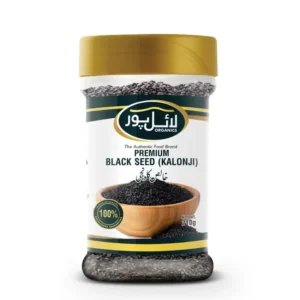 Premium Black Seed – Kalonji (Khalis Kalwanji) – 100% Natural & Pure | Nutrient-Rich & Flavorful | Best Price in Pakistan₨ 277.00 – ₨ 640.00Price range: ₨ 277.00 through ₨ 640.00
Premium Black Seed – Kalonji (Khalis Kalwanji) – 100% Natural & Pure | Nutrient-Rich & Flavorful | Best Price in Pakistan₨ 277.00 – ₨ 640.00Price range: ₨ 277.00 through ₨ 640.00 -
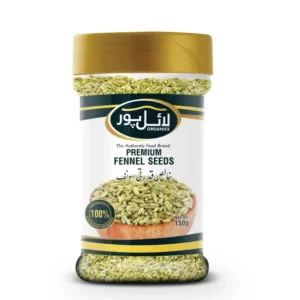 Premium Fennel Seeds (Saunf) – 100% Natural Organic & Pure | Rich in Flavor & Aroma | Best Price in Pakistan₨ 233.00 – ₨ 490.00Price range: ₨ 233.00 through ₨ 490.00
Premium Fennel Seeds (Saunf) – 100% Natural Organic & Pure | Rich in Flavor & Aroma | Best Price in Pakistan₨ 233.00 – ₨ 490.00Price range: ₨ 233.00 through ₨ 490.00 -
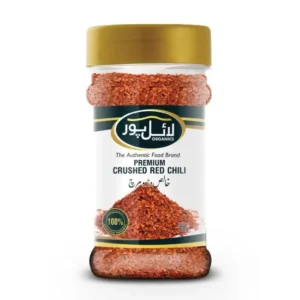 Premium Crushed Red Chili (Crushed Lal Mirch, Darra Mirch) – 100% Natural & Pure | Super Spicy Flavour & Vibrant Color | Best Price in Pakistan₨ 219.00 – ₨ 780.00Price range: ₨ 219.00 through ₨ 780.00★★★★★
Premium Crushed Red Chili (Crushed Lal Mirch, Darra Mirch) – 100% Natural & Pure | Super Spicy Flavour & Vibrant Color | Best Price in Pakistan₨ 219.00 – ₨ 780.00Price range: ₨ 219.00 through ₨ 780.00★★★★★ -
 Premium Kishmish (Raisin) Sundarkhani – 100% Natural Organic & Pure | Rich in Nutrients & Sweet Flavour | Best Price in Pakistan₨ 281.00 – ₨ 410.00Price range: ₨ 281.00 through ₨ 410.00
Premium Kishmish (Raisin) Sundarkhani – 100% Natural Organic & Pure | Rich in Nutrients & Sweet Flavour | Best Price in Pakistan₨ 281.00 – ₨ 410.00Price range: ₨ 281.00 through ₨ 410.00 -
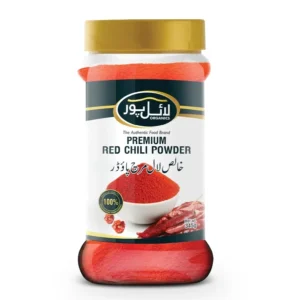 Premium Red Chili Powder (Lal Mirch Powder) – 100% Natural & Pure | Hot Spicy Flavour & Vibrant Color | Best Price in Pakistan₨ 200.00 – ₨ 1,015.00Price range: ₨ 200.00 through ₨ 1,015.00
Premium Red Chili Powder (Lal Mirch Powder) – 100% Natural & Pure | Hot Spicy Flavour & Vibrant Color | Best Price in Pakistan₨ 200.00 – ₨ 1,015.00Price range: ₨ 200.00 through ₨ 1,015.00 -
 Premium Black Pepper Powder (Kali Mirch Powder) – 100% Natural & Pure | Bold Flavour & Rich Aroma | Best Price in Pakistan₨ 664.00
Premium Black Pepper Powder (Kali Mirch Powder) – 100% Natural & Pure | Bold Flavour & Rich Aroma | Best Price in Pakistan₨ 664.00 -
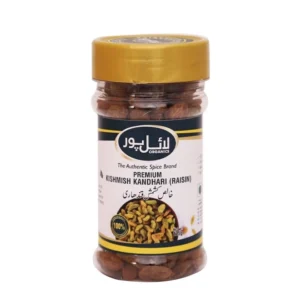 Premium Kishmish (Raisin) Kandhari – 100% Natural & Pure | Rich in Nutrients & Sweet Flavour | Best Price in Pakistan₨ 200.00 – ₨ 260.00Price range: ₨ 200.00 through ₨ 260.00
Premium Kishmish (Raisin) Kandhari – 100% Natural & Pure | Rich in Nutrients & Sweet Flavour | Best Price in Pakistan₨ 200.00 – ₨ 260.00Price range: ₨ 200.00 through ₨ 260.00 -
 Premium Flax Seed (Alsi) – 100% Natural Organic & Pure | Rich in Omega-3 & Fiber | Best Price in Pakistan₨ 233.00 – ₨ 464.00Price range: ₨ 233.00 through ₨ 464.00
Premium Flax Seed (Alsi) – 100% Natural Organic & Pure | Rich in Omega-3 & Fiber | Best Price in Pakistan₨ 233.00 – ₨ 464.00Price range: ₨ 233.00 through ₨ 464.00






